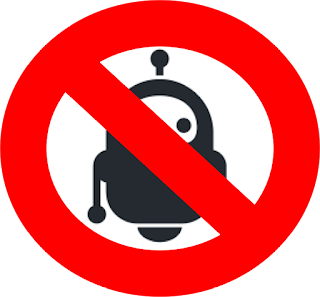 |
| Beyond the Chatbot Hype |
2016 has been predicted to be the
year of conversational commerce, and I’d say that this prediction largely
held true. Conversational interfaces have become more and more mainstream, and
their support by AI and bots has become all the rage. While people more and
more turn to their smartphones and Google to find answers to their questions,
companies are increasingly looking at bot support to increase the efficiency of
their call centers.
But where is reality?
In their 2016 hype cycle on emerging
technologies Gartner places
·
Conversational UIs in the
innovation trigger phase with a predicted time of 5 – 10 years to mainstream
adoptions
·
Machine Learning on the peak of
inflated expectations with a period of 2 – 5 years to mainstream adoption
Forrester Research in their recent AI
tech radar places virtual agents and machine learning into their growth
phases of their respective life cycles, giving them 5 – 10 years to mainstream,
while acknowledging a successful trajectory.
So, clearly, AI and conversational systems
are strategic.
At the same time Abinash Tripathy, CEO of helpshift, a leading helpdesk company
providing users with instant, proactive, and personalized in-app support, feels
that “we are closer to IoT than to having really helpful bots”. Some bots are actually harming the customer
experience.
And he is right.
Why? Several reasons. Essentially
artificial intelligence, driven by machine learning or deep learning, is not
yet intelligent enough. Too many bots are still driven by decision trees, which
severely limit the possible conversations that the bot can serve.
Second, bots’ ability to understand natural
language is still lacking, albeit improving, and probably improving fast.
At the same time a handover to a human
agent, or another bot – think bot-swarm – is often poor or non-existent,
leaving the customer with an unresolved question and in limbo.
This leads to a poor customer experience.
Additionally, the bot’s, as well as the
overall help system’s, integration into a knowledge base is crucial, but often
underdeveloped. A customer query needs to be translated into a meaningful query
to the knowledge base and/or additional information. Think “What is the status
of my recent order?” or: “I cannot receive calls but can dial out?”. This needs deep integration into a corporate
knowledge base as well as transactional systems.
While a human agent can cover the lack of
systems integration, a bot cannot achieve this. A bot is depending on the
intelligent, and continuous indexing of corporate knowledge.
Again, poor customer experience.
In summary, Abinash maintains that “the
need most bots are filling should not require an artificially intelligent
conversation. If they are, they’re probably not doing it very well (yet).
Rather, the best chatbots allow users to interact with their surroundings
(like the baseball game example), act as refined search engines, or provide
real-time updates”. At the moment “Chatbots are best used to relay simple
updates”.
But, wait! On one hand AI and bots are part
of the future and then they are not really useful but harm the customer
experience. Isn’t that a contradiction in itself?
No, it is not. Merely a question of
Thinking Big while Acting Small and doing first things first. AsI have written before an important part of providing good service is being
available to help the customers on their preferred channels, at the
time of their choosing, and at their pace.
And one of the main channels is the
smartphone, the second is chat. Additionally, people are starting with search
before going for direct support. So, the way to help customers is an integrated,
intelligent, efficient service offering that helps them getting to the
information that they want with minimal effort on their side.
The keywords here are: Mobile, app, search,
and chat.
Combining this we arrive at an offering
that offers customer service directly in app, with an integrated, local
knowledgebase, integrated and embedded chat, as well as the easy ability to
turn the conversation into a voice (phone) conversation. Due to being embedded
into the app, this offering also helps the agents by delivering contextually
relevant information that shortens time to resolution. The same works for
embedding this offering into a web site.
Add a back end that efficiently supports
the agents with automation, workflow, collaboration tools, a clean user
interface, and that integrates well with community systems, knowledge bases,
other OLTPs including CRM systems, and the enterprise- and web content
management systems and there is a strong foundation for improving even further.
Once this foundation is in place, AI and
bots can be deployed in a useful manner, first starting in a learning-only
mode, then more and more engaging in customer initiated as well as company
initiated interactions. These bots can ensure quick reaction; they gather missing
relevant information can already offer solutions for the simpler problems.
Minimally they keep the customer engaged and do a seamless handover to a human
agent. This does not only help the customer, but the agent, too, as she is
prepared and can dig right into the problem at hand. As the chatbots continue
to be supported by a learning system they ‘learn’ from ongoing conversations
and therefore the problems they solve can become increasingly complex. This
fact, plus their ability to support the agent via continuously suggesting good
solutions based upon the conversation flow and the knowledge base further
increase the efficiency of the supporting agents who can increasingly support
on more challenging problems instead of being in the need to ask repeatedly for
the same information and answer the same ole questions over and over.

Comments
Post a Comment